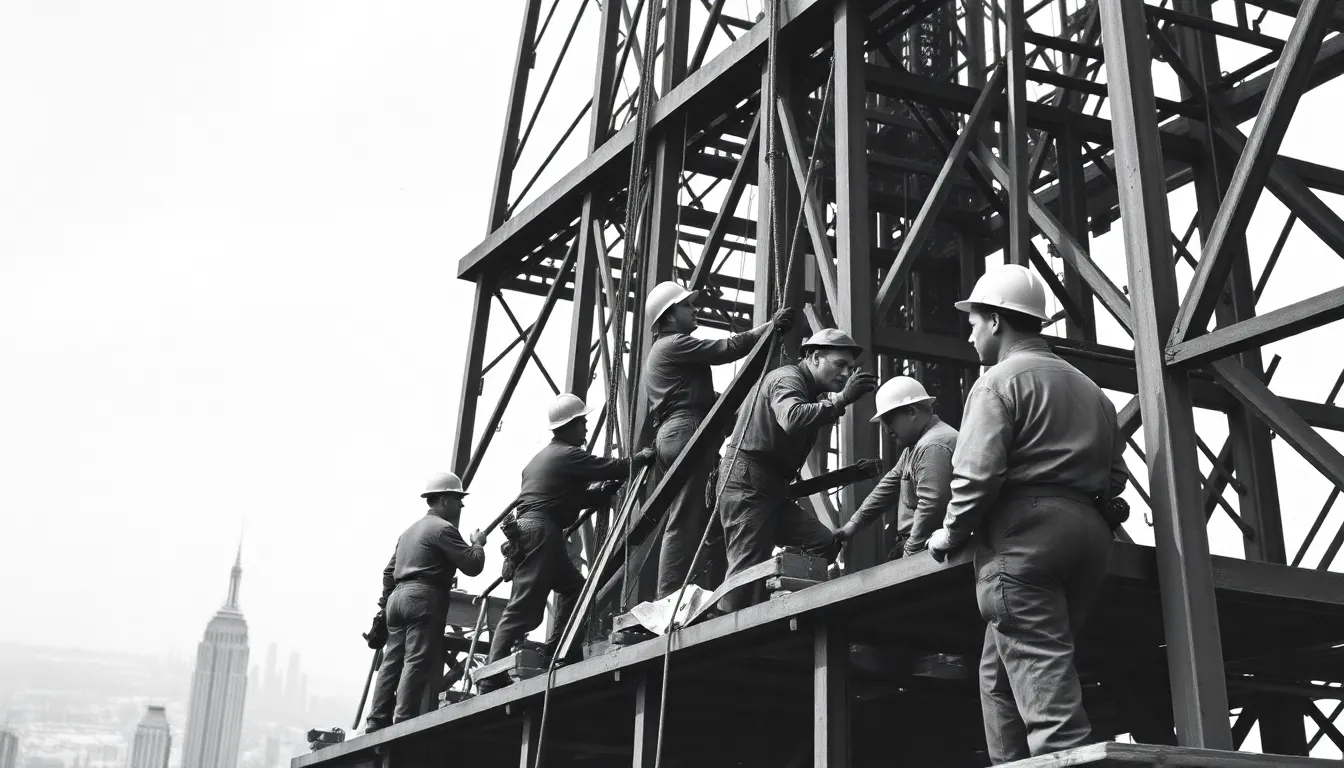The Empire State Building stands as a beacon of architectural brilliance and ambition, but its towering presence comes with a sobering history. As workers raced against time to erect this iconic skyscraper, they faced dangers that would make even the bravest souls think twice. With heights that reached for the heavens, the construction site became a stage for both triumph and tragedy, leading to a surprising number of fatalities—about 5 during its construction.
While the building is celebrated as a marvel of engineering, the stories of those who risked it all are often overshadowed. It’s essential to remember these brave individuals, whose lives were intertwined with the steel and concrete. Join us as we delve into the lesser-known tales of courage, sacrifice, and a few darkly humorous anecdotes that remind us that every great achievement has its price.
Table of Contents
ToggleOverview of the Empire State Building
The Empire State Building stands as an iconic symbol of New York City. Constructed between 1930 and 1931, this 102-story skyscraper reaches a height of 1,454 feet when including its antenna. Designed by Shreve, Lamb & Harmon, its Art Deco style reflects the architectural trends of the era. Notably, it held the title of the world’s tallest building for nearly 40 years.
Workers faced numerous dangers during construction. Precise coordination allowed for efficient yet risky work at great heights. The estimated number of fatalities reached five, each incident shedding light on the hazardous conditions of the time. The rush to complete the building amid the Great Depression led to a relentless pace, sometimes compromising safety protocols.
Innovative techniques were employed throughout the project. Steel-frame construction allowed for rapid progress, showcasing advancements in building technology. More than 3,400 workers contributed to the project, tackling challenges head-on. Many stories highlight not only courage but also the camaraderie formed among laborers who faced danger together.
Completion of the Empire State Building transformed New York’s skyline and economy. It became a beacon of hope during challenging times, attracting tourists and businesses alike. Over the years, it has appeared in various films and television shows, solidifying its place in popular culture. Celebrated for its grandeur, the building also serves as a reminder of the human cost of ambitious projects.
Historical Context of Construction

The construction of the Empire State Building unfolded during a tumultuous period in American history, directly impacting the workers involved in the project.
The Great Depression Era
The Great Depression, beginning in 1929, created a climate of economic hardship. Unemployed individuals flocked to construction sites, seeking work and stability. Job opportunities arose, yet the pressure for rapid completion intensified. Workers faced daily hazards while striving to meet tight deadlines. Despite the turmoil, camaraderie formed among the over 3,400 laborers. This sense of solidarity provided some comfort amidst the challenges. Economic conditions dictated the urgency, often compromising safety protocols. Remarkably, this era of adversity led to approximately five fatalities during construction.
Architectural Innovations
Architectural innovations characterized the Empire State Building’s design and construction. Engineers utilized a steel frame to enhance strength and allow for rapid upward growth. The Art Deco style marked the building’s exterior, showcasing intricate details and modern aesthetics. Safety features, like safety nets and harnesses, emerged in response to the dangers encountered by laborers. Innovative techniques streamlined the building process, enabling completion in just over a year. The combination of advanced engineering and skilled craftsmanship transformed the skyline of New York City. As a result, the Empire State Building became an enduring symbol of architectural achievement amidst adversity.
Safety Measures and Regulations
Construction during the Empire State Building’s era faced significant challenges regarding worker safety. Both regulations and standard practices aimed to reduce accidents on site emerged in response to these challenges.
Standard Practices in the 1930s
Standard practices in the 1930s often lacked comprehensive safety measures. Workers typically relied on simple safety gear such as leather gloves and boots. Scaffolding secured workers at various heights but remained rudimentary compared to modern standards. Communication about safety hazards barely scratched the surface as it was often informal. Many workers accepted daily risks as part of their job, leading to a culture where safety was secondary to productivity.
Evolution of Safety Protocols
Safety protocols evolved following the construction of the Empire State Building. Introduction of features like safety nets and harnesses marked a significant turning point. Improved training programs began focusing on accident prevention and hazard awareness, aiming to cultivate safety-oriented mindsets among workers. These changes set the stage for advancements that prioritized worker safety in subsequent projects. By integrating these protocols, the construction industry slowly shifted toward safer working environments.
Empire State Building Construction Deaths
Construction of the Empire State Building involved significant risks for workers. Approximately five fatalities occurred during its swift completion between 1930 and 1931. This statistic highlights the dangers inherent in building such an iconic structure during the Great Depression.
Statistics and Reports
The Bureau of Labor Statistics reported that the construction industry had a high accident rate during the early 1930s. With over 3,400 laborers on-site, these numbers became concerning. Insufficient safety measures contributed to a culture where accidents were commonplace. Historical data indicates a trend of increasing injuries reported annually, underscoring the urgency for better safety protocols as the Empire State Building took shape.
Notable Incidents
Falling debris incidents marked the construction process. A few accidents led to fatalities, while many injuries resulted from inadequate protective equipment. On one occasion, a worker fell from scaffolding, resulting in a fatal outcome. Such occurrences galvanized changes in safety measures. Harnesses and safety nets were developed in response to these tragic events, ensuring better precautions for future construction projects.
Legacy and Impact
The construction of the Empire State Building left an enduring legacy in the construction industry. Changes made during this period reflect a pivotal shift in worker safety and practices.
Changes in Construction Practices
New safety measures emerged in response to previous hazards. Safety nets and harnesses became standard equipment, significantly reducing the risk of falls. Training programs emphasized accident prevention, which enhanced awareness among laborers. Regulations started to outline minimum safety standards, ensuring that workers received proper protective gear. Additionally, communication channels improved, allowing workers to report hazards more effectively. This shift laid the foundation for prioritizing safety on construction sites, impacting future skyscraper projects.
Commemoration of Victims
A memorial at the Empire State Building honors workers who lost their lives during construction. It’s situated in the lobby, offering a place for reflection and remembrance. Memorial plaques list the names of those who died, ensuring their contributions are not forgotten. Furthermore, construction companies now acknowledge their history through safety awareness initiatives. Educational programs emphasize the importance of worker safety, continuing the conversation about the risks involved in building high-rise structures. This ongoing commitment ensures that the sacrifices made during the building’s construction are recognized and respected.
The Empire State Building stands as a testament to human ingenuity and resilience. While its towering presence symbolizes hope and progress, it also serves as a reminder of the sacrifices made by those who built it. The construction workers faced immense dangers and challenges, yet their courage and camaraderie forged a path toward improved safety standards in the industry.
The legacy of the Empire State Building extends beyond its architectural brilliance; it highlights the importance of prioritizing worker safety in construction. As safety protocols evolved, the lessons learned from this monumental project continue to shape practices today, ensuring that the sacrifices of those who came before are never forgotten.






